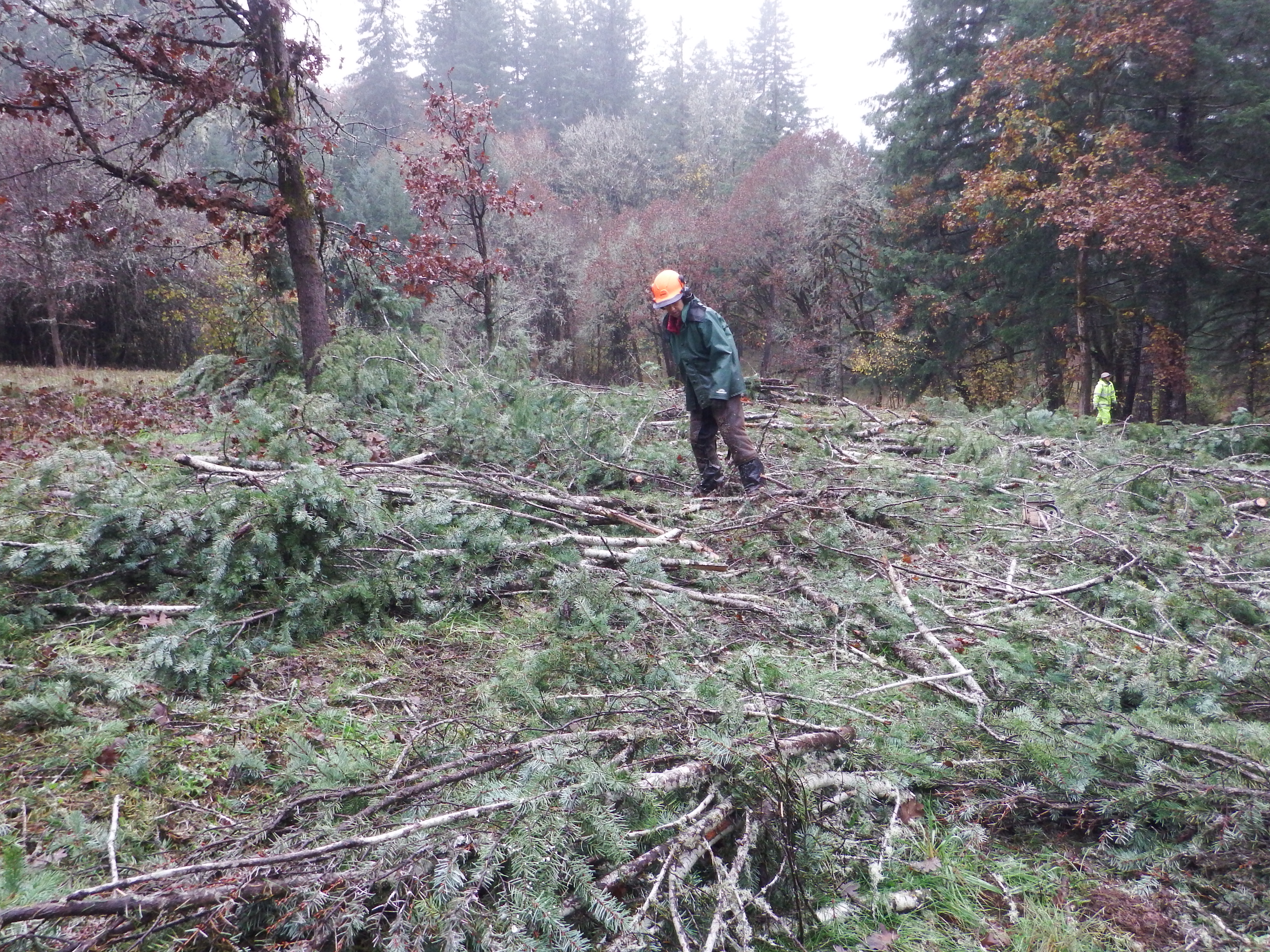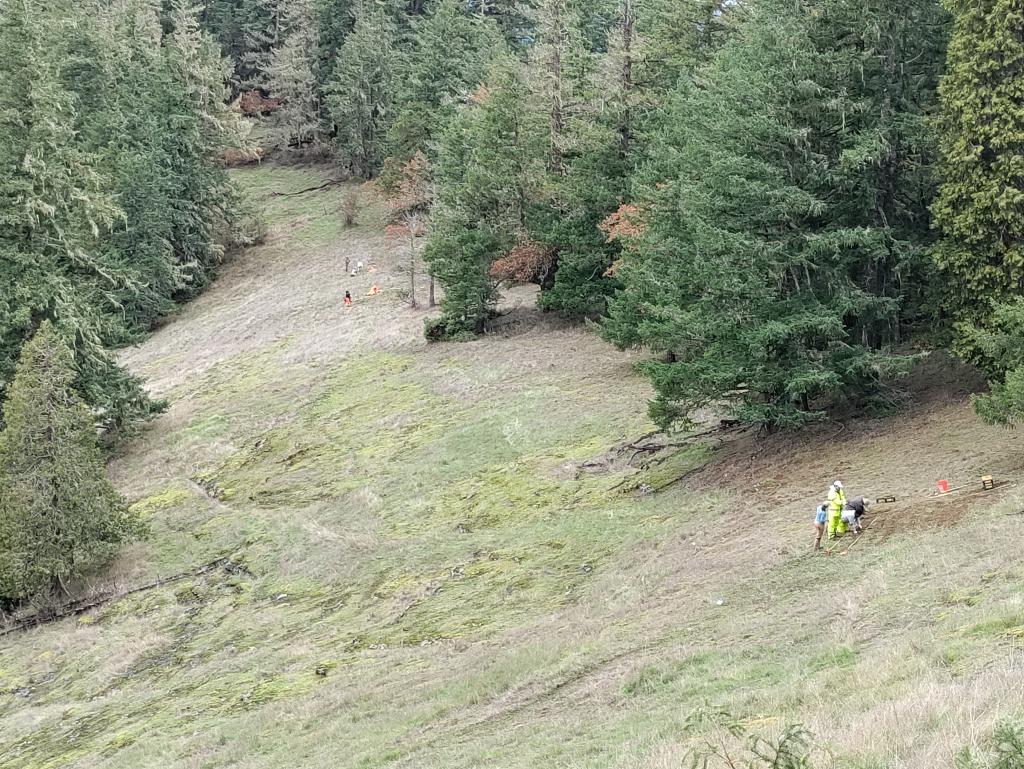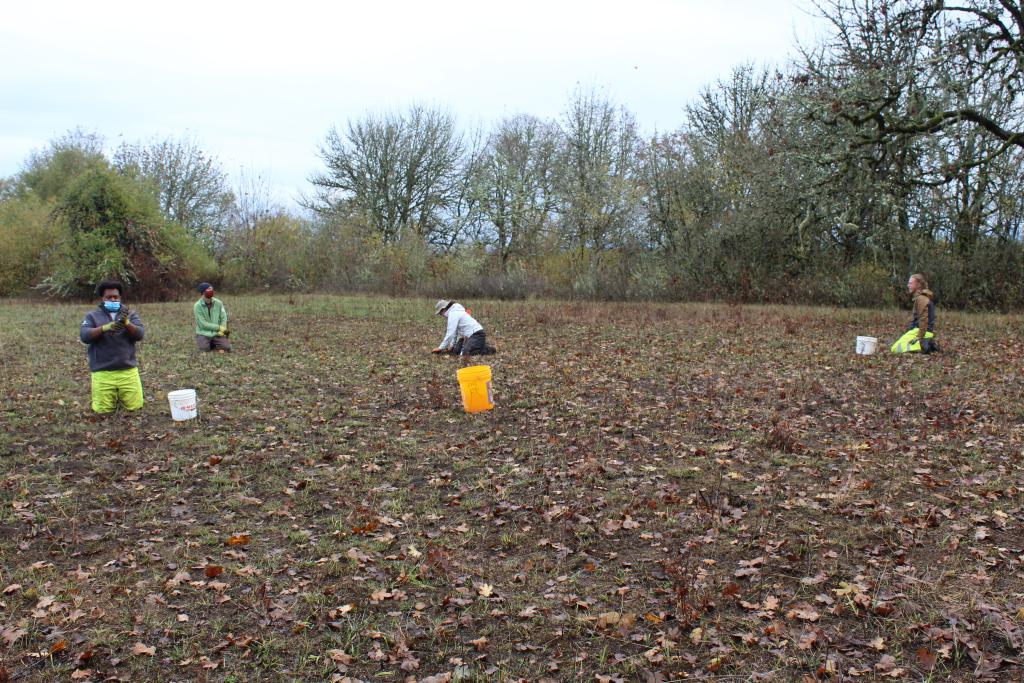
AmeriCorps: Restorative Power of Collective Labor
December 2021
As most of you are aware, being the dedicated IAE blog readers you are, restoration work at IAE is deeply entwined with community volunteers and collaborative labor. Coordinated volunteer efforts are a great help to our projects and have immediate effects on the rehabilitation of a landscape.
This fall IAE hosted an AmeriCorps NCCC (National Civilian Community Corps) volunteer team: Red 8. Red 8 was scheduled to volunteer with us on a dozen different worksites over the course of eight weeks, but as is the case with most restoration work, things change on the fly. The team was reassigned to work at a disaster relief station for Afghan refugees. The team ended up working with IAE for one week and we completed a lot of work in a short time. We worked at four Willamette Valley restoration sites and planted native species and removed woody debris. It is remarkable what 11 people can do in a short amount of time.
For more information about the restoration efforts at Echo Hills to improve habitat for Fender’s blue butterfly click here to read Peter Moore’s article from August 2021.
At Twin Prairie there is a population of shaggy horkelia (Horkelia congesta ssp. congesta), a rare species endemic to Oregon. IAE and BLM staff established three experimental plots to test the efficacy of planting shaggy horkelia plugs versus sowing seeds and to determine if seed origin (Willamette Valley and mid-elevation meadow) effects survival. This year Red 8 was able to help plant hundreds of shaggy horkelia into experimental plots. In addition, Red 8 removed felled conifers around shaggy horkelia plots.
Red 8 helped plant camas and other native blubs at Herbert Farm Natural Area, a site owned by the City of Corvallis. The planting area was burned earlier this year and referenced in Michel Wiman’s article from October 2021, which can be found here. This frequent walking spot for Corvallis residents has seen drastic changes in the last few years and volunteer plantings, especially from AmeriCorps teams, has been crucial to the restoration process.
The work done by this AmeriCorps team, even in just one week, will make lasting change to the landscapes of these beautiful locations. Always a big thank you to our partners mentioned in this article: Bureau of Land Management: Upper Willamette Field Office, Karen Fleck-Harding and Tom Harding, City of Corvallis and Greenbelt Land Trust. We want to give a special thank you to Red 8 for putting your energy into these places. We know you wanted to stay longer and see more cool locations. We are sure your efforts will make lasting change wherever you volunteer, and hopefully some of y’all will come back and volunteer with us.
If anyone is interested in volunteering on IAE projects, you can sign up to receive notifications here.
Restoration
Research
Education
Get Involved
Contact
Main Office:
4950 SW Hout Street
Corvallis, OR 97333-9598
541-753-3099
[email protected]
Southwest Office:
1202 Parkway Dr. Suite B
Santa Fe, NM 87507
(505) 490-4910
[email protected]
© 2024 Institute for Applied Ecology | Privacy Policy




